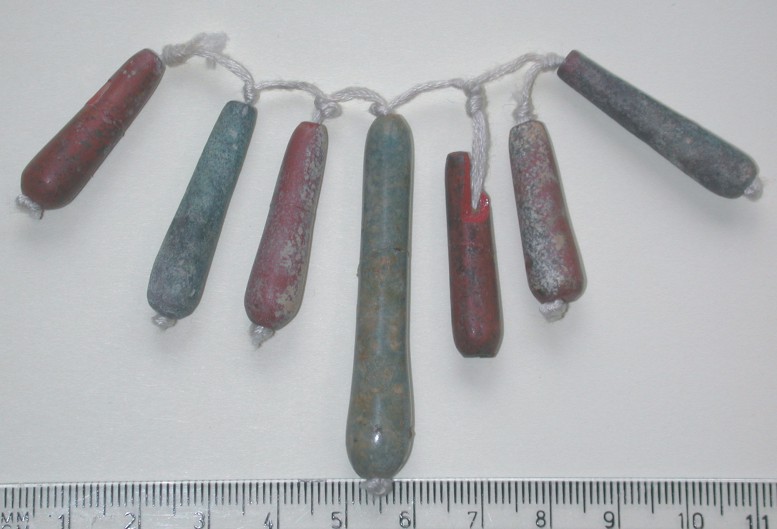EC252
EC252
 Glass pendants. New Kingdom-Late Dynastic.
Glass pendants. New Kingdom-Late Dynastic.
7 bead pendants of red and green glass. The longest bead is 54mm in length.
The stringing of these beads is modern and may not reflect how the artefacts were arranged in antiquity. A necklace with pectoral from the mummy of Psusennes I (1039-991 BC) had similar shaped beads to these (Andrews 1990, fig. 57). However, these were arranged as a simple string rather than in pendant form.
The earliest glass in Egypt dates to around 1500 BC and is of a very high quality. That some of the words for glass in Egyptian are Hurrian or Arkadian has led to the belief that the early glass was imported. Indeed the Amarna letters mention imported glass. Soon after it appears that there is some evidence of actual working but as there is no experimental period it has been suggested that this glass was made by foreign glass workers, perhaps brought over by Tuthmosis III (1479-1425 BC).
Egyptian glass was made from the same materials as faience, that is silica, natron/plant ash and lime. Like faience, it was also coloured from cobalt (see information sheet on faience for where these were procured). It also seems that the production of faience and glass was carried out side by side.
Further Reading
Andrews, C. 1990. Ancient Egyptian Jewellery. London: British Museum Press.